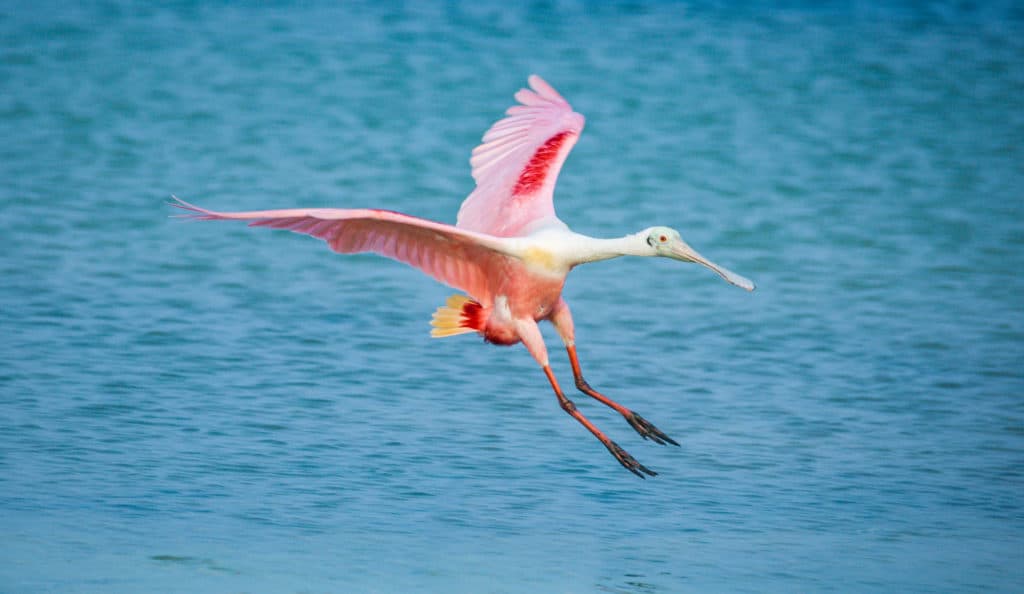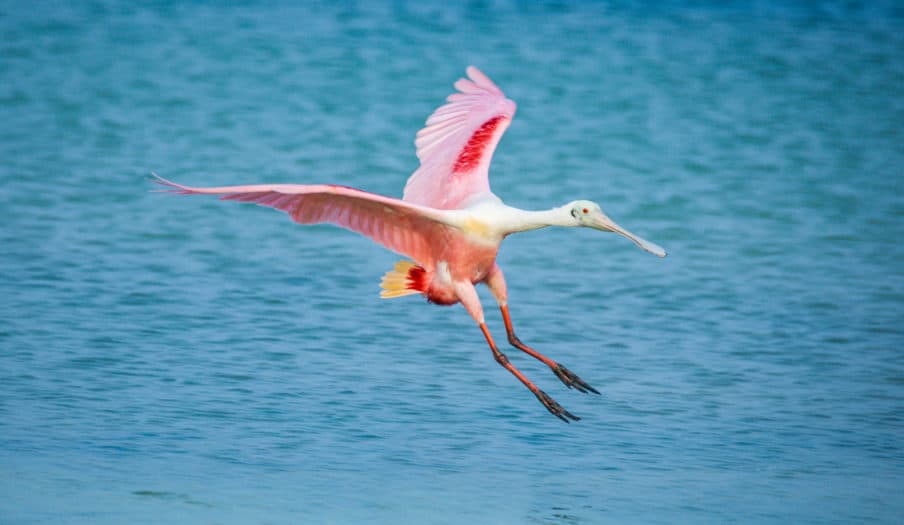
Costa Rica’s wetlands are a testament to the country’s incredible biodiversity. From tangled mangrove swamps along the coast to serene freshwater marshes inland, these ecosystems are teeming with life and play a vital role in maintaining ecological balance. They support countless species, filter water, protect coastlines, and even help combat climate change.
In this guide, we’ll explore the types of wetlands in Costa Rica, their importance, the 12 internationally recognized Ramsar sites, conservation efforts, and how you can experience these natural wonders firsthand.
Types of Wetlands in Costa Rica
Costa Rica’s wetlands are diverse, each type offering unique habitats and ecological benefits. Here’s a closer look at the five main types:
Mangrove Swamps
Picture yourself kayaking through a maze of roots rising from brackish water—that’s a mangrove swamp. Found along both the Pacific and Caribbean coasts, these wetlands are dominated by salt-tolerant mangrove trees. Their intricate root systems provide nurseries for fish, crabs, and shrimp, while birds like herons and kingfishers perch above. Mangroves also shield coastlines from erosion and storm surges, acting as natural barriers. Key locations include Tortuguero National Park and the Térraba-Sierpe wetlands.
Freshwater Marshes
In low-lying areas like Caño Negro Wildlife Refuge, freshwater marshes thrive with grasses, cattails, and reeds in slow-moving or standing water. These wetlands are a haven for waterfowl—think egrets, ibises, and roseate spoonbills—along with amphibians and fish. They filter pollutants, ensuring cleaner rivers and lakes, and help reduce flood risks by absorbing excess water.
Seasonal Floodplains
Seasonal floodplains, found in areas like Palo Verde National Park, transform with the seasons. During the rainy months, they flood, creating breeding grounds for migratory birds and other wildlife. In the dry season, they become feeding areas for species like crocodiles and capybaras. These wetlands act as natural sponges, storing water to maintain river flows year-round.
Peatlands
Less common but equally important, peatlands are found in highland areas like the Talamanca mountains. These boggy ecosystems accumulate partially decayed plant material, forming peat that stores vast amounts of carbon. They support unique species adapted to acidic conditions and help regulate water flow, reducing the risk of floods and droughts.
Lagoons and Estuaries
Where rivers meet the sea, lagoons and estuaries form, blending fresh and saltwater. These coastal wetlands, like those in Gandoca-Manzanillo, are critical nurseries for marine life, including commercially important fish species. They also serve as feeding grounds for migratory birds and protect coastlines from erosion.
Why Wetlands Matter
Wetlands are often called the “kidneys of the Earth” for their ability to filter water, but their benefits go far beyond that.
Biodiversity Hotspots
Costa Rica’s wetlands are home to an astonishing array of species. From jaguars and manatees to scarlet macaws and the endangered jabirú stork, these ecosystems support both resident and migratory wildlife. Mangroves and estuaries are nurseries for fish, while marshes host amphibians and reptiles like the American crocodile.
Water Management
Wetlands act as natural sponges, absorbing excess water during heavy rains and releasing it slowly during dry periods. This helps prevent floods, maintain river flows, and ensure clean water by trapping sediment and pollutants before they reach rivers and lakes.
Climate Regulation
Peatlands and mangroves are powerful carbon sinks, storing carbon in their soils and biomass. Protecting these wetlands helps mitigate climate change, while their degradation can release stored carbon, exacerbating global warming.
Economic and Cultural Value
Wetlands support local economies through fisheries, agriculture, and tourism. Boat tours and birdwatching attract visitors, generating income for communities. For indigenous groups like the Bribri and Cabécar, wetlands provide food, medicine, and cultural significance, with traditional knowledge guiding sustainable practices.
Costa Rica’s Ramsar Sites
Costa Rica is home to 12 wetlands designated as Ramsar Sites of International Importance, covering 569,742 hectares. These sites are recognized globally for their ecological value and are protected under international agreements. Below is a table summarizing each site:
| Ramsar Site | Location | Area (ha) | Key Features |
|---|---|---|---|
| Parque Nacional Palo Verde | Guanacaste | 24,519 | Haven for aquatic birds, including the endangered jabirú stork. |
| Refugio Nacional de Vida Silvestre Caño Negro | Alajuela | 9,969 | Large caiman population, habitat for the pez gaspar (living fossil). |
| Refugio Nacional de Vida Silvestre Tamarindo | Guanacaste | 500 | Nesting site for leatherback turtles, part of Las Baulas Marine National Park. |
| Humedal Nacional Térraba Sierpe | Puntarenas | 30,654 | Largest mangrove system, with ancient stone spheres from 300 BC. |
| Refugio Nacional de Vida Silvestre Mixto Jairo Mora Sandoval Gandoca-Manzanillo | Limón | 9,445 | Mangroves, coral reefs, and turtle nesting sites. |
| Humedal Caribe Noreste | Heredia, Limón | 75,310 | Canals and lagoons, key for manatees and green sea turtles. |
| Parque Nacional Isla del Coco | Pacific Ocean | 99,623 | UNESCO World Heritage Site with high marine biodiversity. |
| Manglares de Potrero Grande | Guanacaste | 139 | Intact Pacific mangrove with high mollusk diversity. |
| Laguna Respingue | Guanacaste | 75 | Only freshwater coastal lagoon on the Pacific coast. |
| Cuenca Embalse Arenal | Alajuela, Guanacaste | 67,296 | Biodiverse area around Lake Arenal, supports hydroelectric power. |
| Turberas de Talamanca | Cartago, Limón, San José | 192,520 | High-altitude peat bogs, vital for water and carbon storage. |
| Humedal Maquenque | Alajuela | 59,692 | Supports endangered species like the great green macaw. |
Conservation Challenges and Efforts
Despite their importance, Costa Rica’s wetlands face significant threats. Urban development and agriculture encroach on these areas, reducing habitats. Pollution from runoff and waste harms water quality, affecting both wildlife and human communities. Climate change, with rising sea levels and altered rainfall, further stresses these ecosystems. Invasive species, like certain fish or plants, can outcompete native species, disrupting ecological balance.
Costa Rica has responded with robust conservation measures:
- Protected Areas: Many wetlands are within national parks or wildlife refuges, ensuring legal protection.
- Ramsar Designation: The 12 Ramsar sites receive international support and monitoring.
- Restoration Projects: Efforts to rehabilitate degraded wetlands are underway, particularly in areas like Térraba-Sierpe.
- Community Engagement: Local communities participate in conservation, benefiting from sustainable tourism and education programs.
- Research and Monitoring: Scientists track wetland health, informing management strategies to maintain biodiversity.
Exploring Wetlands: A Visitor’s Guide
Costa Rica’s wetlands are a paradise for eco-tourists, offering unforgettable experiences. Here are some highlights:
Top Destinations
- Tortuguero National Park: Glide through canals to spot monkeys, sloths, and nesting sea turtles. The park’s mangroves and lagoons are a UNESCO Biosphere Reserve.
- Caño Negro Wildlife Refuge: A birdwatcher’s dream, with over 300 species, including the roseate spoonbill and Nicaraguan grackle.
- Palo Verde National Park: Explore marshes and mangroves along the Tempisque River, home to crocodiles and jabirú storks.
- Corcovado National Park: Known for its peatlands and diverse wildlife, including jaguars and tapirs.
- La Amistad International Park: Straddling Costa Rica and Panama, this park features highland peatlands and rare species like the harpy eagle.
- San Vito National Wetlands: In Puntarenas, this site offers trails for birdwatching and spotting crocodiles.
Activities and Tips
Imagine paddling through Tortuguero’s canals, the air alive with howler monkey calls, or standing in Palo Verde, binoculars ready, as a jabirú takes flight. Activities include:
- Boat Tours and Kayaking: Explore mangroves and lagoons for close-up wildlife views.
- Birdwatching: Spot vibrant species like scarlet macaws and roseate spoonbills.
- Hiking: Trails in parks like San Vito offer scenic views and wildlife encounters.
- Photography: Capture the beauty of wetlands, from marshes to birdlife.
For the best experience, visit during the dry season (December to April) when wildlife is easier to spot. Wear sunscreen, insect repellent, and waterproof shoes. Stay on designated paths to protect these fragile ecosystems, and consider hiring a local guide for deeper insights. Juan, a guide at Caño Negro, shares, “The wetlands are a living classroom. Every visit teaches me something new about the balance of life here.”
Preserving Costa Rica’s Wetland Wonders
Costa Rica’s wetlands are more than just scenic landscapes—they’re vital to the country’s ecological, economic, and cultural fabric. From supporting endangered species to regulating water and climate, these ecosystems are irreplaceable.
By visiting responsibly and supporting conservation efforts, you can help protect these treasures. Whether you’re a birder, a nature lover, or simply curious, exploring Costa Rica’s wetlands will leave you with a deeper appreciation for its natural heritage.

